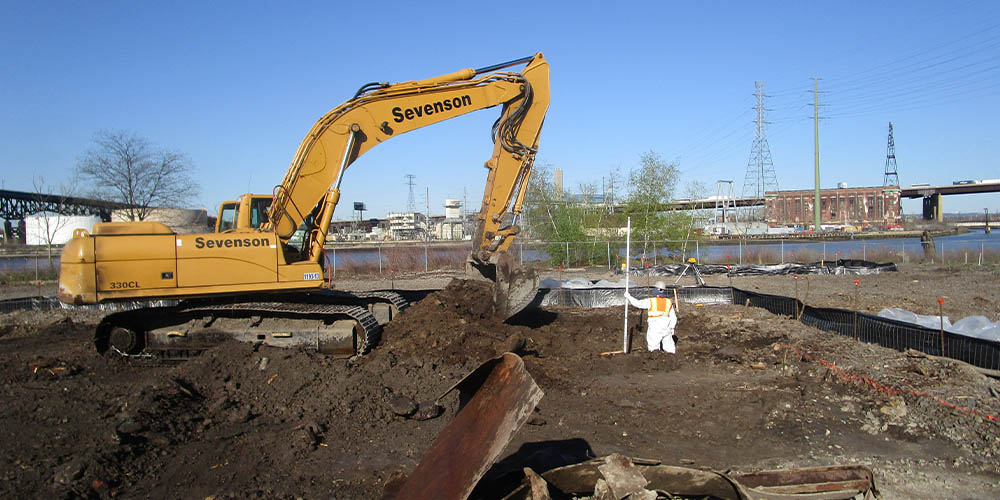
Syncon Resins Superfund Site – Operable Unit 2 Remediation
| Location | South Kearney, New Jersey |
| Contract Value | $18,800,000 |
| Period of Performance | June 2016 – February 2019 |
| Role | Prime Contractor |
History & Location
Located in a heavily industrialized section of South Kearney, New Jersey, the 15-acre Syncon Resins Superfund Site facility formerly produced alkyd resin carriers for pigments, paints, and varnishes. The site consisted of reactor buildings, high-volume storage tanks, two unlined lagoons, USTs, and piping infrastructure. Waste disposal operations contaminated the site’s groundwater, soil, and buildings.
Significant Project Features
- Self-performed excavation, characterization, and T&D of >49K CY of soil impacted by hazardous contaminants, including VOCs, SVOCs, PCBs, pesticides, asbestos, and heavy metals
- Installation of 488 LF of steel sheeting to protect existing structures
- Demolition and disposal of 13 buildings (totaling 63K SF) impacted by asbestos and lead contaminants
- Managed and coordinated multiple hazardous and non-hazardous wastestreams, including >65K tons of non-hazardous soil and debris
- Designed, constructed, operated, and maintained a temporary on-site 150-GPM WWTP (treated and discharged >2.5M gallons of contaminated water)
- Completed >62K safe workhours without a lost-time incident
- Earned “VERY GOOD” project evaluation ratings on Interim CPARS
Project Gallery
Rooted in Remedial Construction
Expanded into Environmental Dredging
Start a conversation about your upcoming project
(716) 284 - 0431
© 2021 Sevenson Environmental Services -
Privacy Policy | Sitemap
2749 Lockport Road | Niagara Falls, NY 14305
P: (716) 284 - 0431 | F: (716) 284 - 7645
